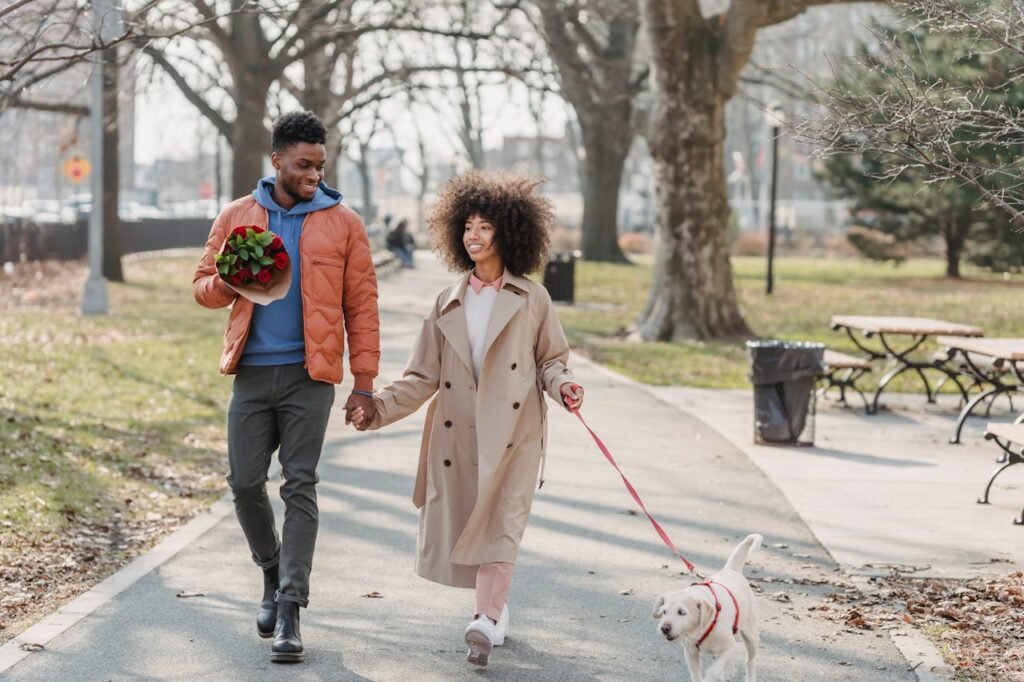What to Wear on the First Date for a first date carry more weight than you might think. Research from Northwestern University found that what we wear actually changes how our brains function.
When participants wore white lab coats associated with doctors, they made fewer errors on attention-related tasks and showed improved focus. This phenomenon, called enclothed cognition, explains why your outfit selection matters beyond simple aesthetics.
Fashion isn’t just about looks—it’s a form of non-verbal communication. The outfit you choose can project confidence, approachability, and authenticity even before you say a word. On a first date, this silent introduction can influence how both you and your partner feel throughout the interaction. Choosing the right first-date outfit is part psychology, part self-expression, and entirely about comfort that builds connection.
The Gender Divide in Fashion Expectations
Women and men approach first-date fashion from completely different angles. According to Zoosk research, 94% of women consider dressing nicely mandatory for first dates. Men show less concern, with 73% saying they can overlook poor style choices. This gap becomes even wider when examining dealbreakers. More than half of women (54%) will end things if their date dresses poorly, while most men won’t let fashion choices affect their romantic interest.
The disparity extends to preparation time. Most women spend an hour getting ready (37%), while another 25% need 45 minutes. Men typically try on one outfit and call it done (67%), but 60% of women test two or three combinations before settling on their choice. These patterns show how societal pressures around appearance affect men and women differently.
Understanding these differences can make you more empathetic on dates and help both genders relax their expectations. Ultimately, it’s not a competition of style but a reflection of personal care and respect toward the occasion.
Red Works, Yellow Doesn’t
Color psychology research points to specific shades that increase attraction. Both men and women rate their dates as more attractive when they wear red or black. Red connects to romance in our minds, while black suggests sophistication. People also report feeling more attractive when wearing these colors. Studies confirm that men and women actually choose red clothing more often for first dates compared to regular social situations.
Yellow sits at the opposite end of the attraction scale. Participants in color perception studies consistently ranked yellow as less attractive than other options. If you own that bright yellow blazer or dress, save it for another occasion.
Color choices don’t just influence how others see you—they affect how you see yourself. Wearing shades that make you feel confident can elevate your energy, posture, and conversational presence during the date. Fashion psychology experts agree that confidence dressing always wins over trend chasing.
When Age Gaps Influence Your Style Choices
Your outfit strategy might need adjustment depending on who you’re meeting. Someone dating an older man might consider how generational fashion preferences differ, while those meeting someone from their college friend group can lean into shared cultural references. Age differences between partners often create interesting fashion dynamics where one person gravitates toward classic pieces and the other prefers current trends.
These generational style variations appear across all dating scenarios. A 28-year-old meeting a 35-year-old professional might choose polished separates over trendy streetwear, while someone dating within their age bracket might feel comfortable in more experimental pieces. The key lies in reading the situation rather than following rigid rules about what different age groups supposedly prefer.
Fashion adaptability demonstrates social intelligence—it shows that you’re aware, considerate, and able to match your surroundings without losing your individuality.
Simple Beats Complex
The most confident outfit might surprise you. According to dating platform data, 36% of daters feel most self-assured wearing jeans and a t-shirt. This basic combination outperforms elaborate ensembles for building confidence. Fashion contributors who tested various first-date outfits found that the stress of putting together complicated looks actually diminished their energy and presence on dates.
Online dating profiles support this simplicity principle. Profiles mentioning jeans receive 80% more messages than average, while those referencing shirts or t-shirts get 67% more responses. Meanwhile, profiles that describe themselves as stylish or fashion-conscious can receive up to 135% more incoming messages, suggesting that fashion awareness matters even before meeting in person.
Simplicity communicates authenticity. It tells your date that you’re comfortable in your own skin, which is often more attractive than chasing perfection.
Wrinkles Kill Romance Faster Than Wrong Brands
Maintenance trumps designer labels every time. Two-thirds of singles (66%) identify wrinkled clothing as their biggest fashion turnoff. Half also list baggy clothes as a major problem. These statistics reveal that care and fit matter more than price tags or brand names.
Fashion psychologist Shakaila Forbes-Bell, who earned the world’s first postgraduate degree in Fashion Psychology in 2016, explains that clothing serves as a tool for managing emotions and mood. Her research aligns with dating data showing that well-maintained, properly fitting clothes create better impressions than expensive but poorly kept garments.
In essence, attention to detail communicates effort—and effort is universally attractive. Ironing a shirt or adjusting the fit of your outfit might seem small, but it speaks volumes about self-respect and attentiveness.
Speed of Judgment Changes Everything
First impressions form in under 30 seconds. Research shows 69% of people develop opinions before their date speaks a single word. Physical features matter: 76% identify smiles as the most important element for a positive first impression. Your outfit becomes part of this rapid assessment process, working alongside body language and facial expressions to create an immediate impression.
Over half of daters (53%) put extra thought into first-date outfits compared to later meetings. Additionally, 52% admit that their date’s clothing choices influence their decision about future meetings. These quick judgments mean your fashion decisions carry weight beyond personal preference.
Think of your outfit as your opening statement—subtle, expressive, and impossible to ignore. Pairing that statement with a genuine smile makes it far more powerful.
Comfort Creates Connection
Dr. Dawnn Karen, called “The Dress Doctor” by the New York Times, developed frameworks for intentional dressing that prioritize internal feelings over external validation. Her approach asks people to consider how they feel in an outfit rather than how they look. This philosophy aligns with real dating experiences where comfort enables better conversation and genuine connection.
Fashion editors recommend venue-appropriate choices. Coffee dates allow casual denim that makes you seem approachable. Dinner engagements might call for slightly elevated pieces. The goal remains consistent: wear something that lets you focus on your date rather than adjusting uncomfortable clothing throughout the evening.
Confidence flows naturally when you feel at ease in your outfit. Comfort doesn’t mean careless—it means being relaxed enough to be present, engaged, and real. According to relationship researchers, authenticity ranks among the top traits people find attractive on early dates.
Conclusion: Dress to Express, Not Impress
First-date fashion isn’t about winning a beauty contest—it’s about showing up as the best version of yourself. Science confirms that clothing affects mood, confidence, and even attraction, but the goal isn’t perfection. The most successful outfits combine authenticity with awareness: clean, well-fitted clothes that align with your personality and the occasion.
Whether you choose a bold red dress or a simple pair of jeans, remember that your comfort and confidence are the true fashion statements. Dressing thoughtfully shows respect—for yourself and for your date. When you wear something that reflects who you genuinely are, you create space for meaningful connection, effortless conversation, and the kind of impression that lasts well beyond that first meeting.
Your first-date outfit should tell a story—one that’s honest, confident, and completely you.
Explore the latest fashion trends here
Photo by Andres Ayrton:







